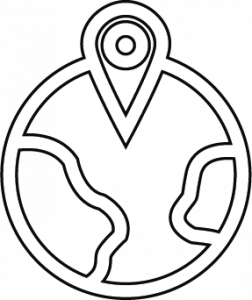We all know that connecting with the right customers is paramount. However, in today’s fast-paced marketing environment, not all customers are created equally – nor should be treated as such.
Marketers need precision, and that’s where the power of AI-driven audience segmentation comes into play. At Making Science, our proprietary solution, Clustering, tackles the challenge of maximizing your marketing impact by separating customers and prospects by behavior.
Clustering dives deep into behavioral, transactional, and contextual signals instead of relying on outdated demographic assumptions . This allows us to identify distinct user groups based on their actual engagement and purchase patterns. While lookalike audiences can be a part of the strategy, Clustering truly shines when it comes to remarketing and re-engaging your existing customer base – the individuals who have already shown interest in your brand.
Let’s imagine a thriving online retailer brand that specializes in sustainable and ethically sourced apparel. They’ve built a loyal customer base, but their broad marketing campaigns sometimes miss the mark, reaching many individuals with little interest in their unique products.
By implementing Clustering, our retail brand can analyze past purchase history, website interactions (like browsing specific product categories or spending time on their sustainability page), and even responses to previous marketing efforts. This data allows Clustering to identify key audience segments within their existing customer base:
- “Eco-Conscious Enthusiasts”: Customers who frequently purchase items from their sustainable collection and actively engage with content related to ethical sourcing.
- “Urban Style Seekers”: Customers who gravitate towards their trendier, city-inspired pieces and often engage with fashion-forward content.
- “Loyal Repeat Buyers”: Customers with a history of multiple purchases across various product lines, indicating strong brand affinity.
- “Just Browsing”: Customers who aren’t ready to purchase.
These audience segments allow for multiple marketing activation activities. For example, instead of sending generic promotions to their entire email list, they can now tailor their messaging. The “Eco-Conscious Enthusiasts” might receive exclusive previews of new sustainable arrivals or invitations to a webinar on ethical fashion. The “Urban Style Seekers” could be targeted with lookbooks featuring the latest trends and styling tips. And the “Loyal Repeat Buyers” might receive personalized thank-you offers or early access to sales events.
For a digital ads campaign, these audience segments can be sent to ad platforms to help with targeting, bidding and even exclusion lists. While bidding algorithms in these tools provide some level of segmentation, Clustering is based on propensity and predictive modeling. The online retailer can also use these segments for audience expansion or to build similar audiences.
The impact? By focusing their efforts on high-value segments identified by Clustering, our online retail brand can expect to see a significant boost in sales from their existing customers and a considerable reduction in the media cost it takes to achieve each conversion. Our benchmarks show that businesses leveraging similar AI-powered audience segmentation can achieve a 20% incremental sales increase and a 20% reduction in cost per conversion.
Additionally, all the cluster results are transparent. Normally models are black boxes, but in addition to each cluster, the information about the users in that cluster are also provided. This information could be used to inform creative, website landing pages, messaging and more.
So let’s stop wasting marketing budgets on lukewarm leads. Embrace the precision of AI-powered audience segmentation with Making Science and start connecting with the customers who truly matter. Ready to see how Clustering can transform your marketing results? Reach out to our team today to learn more.







 Cookie configuration
Cookie configuration